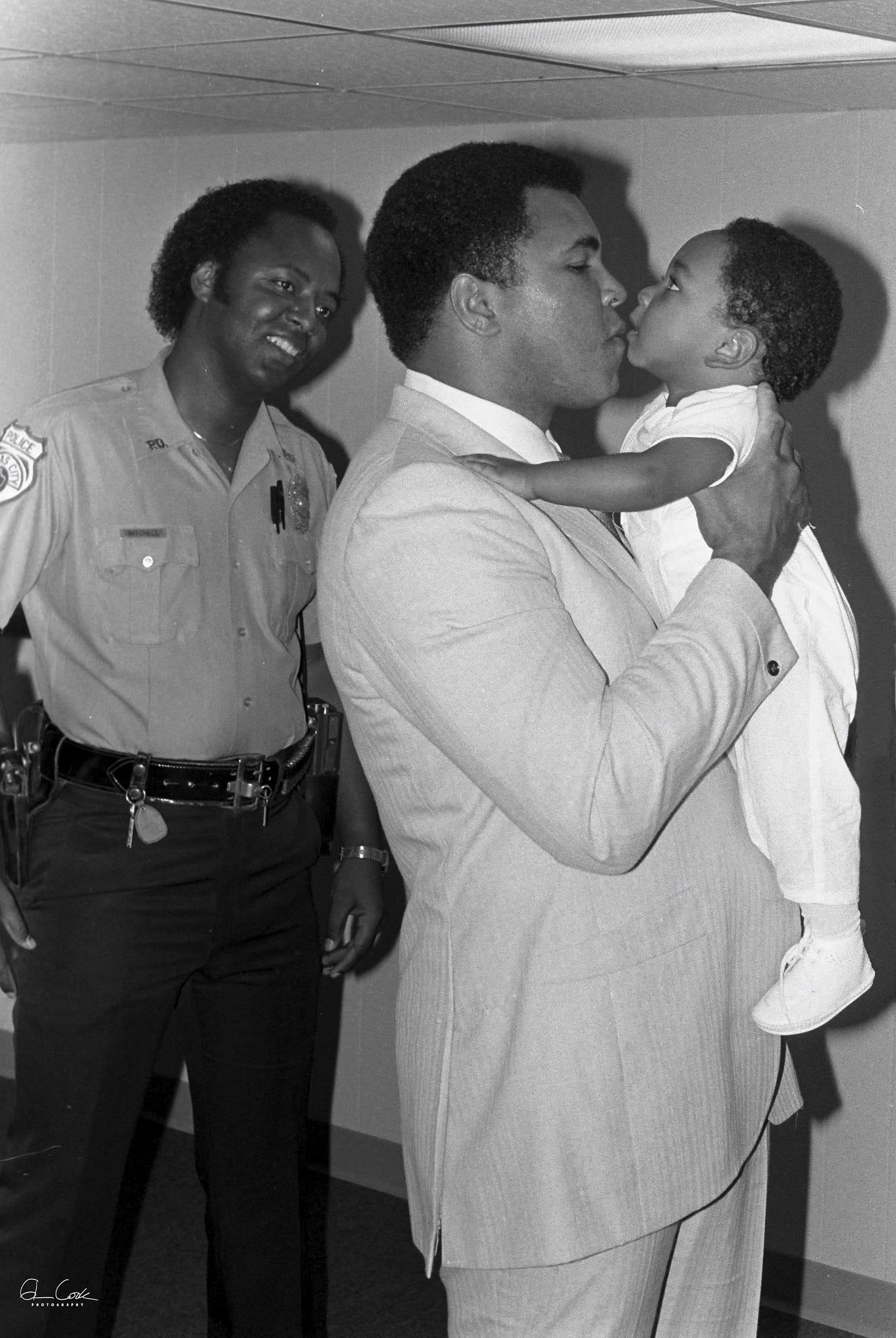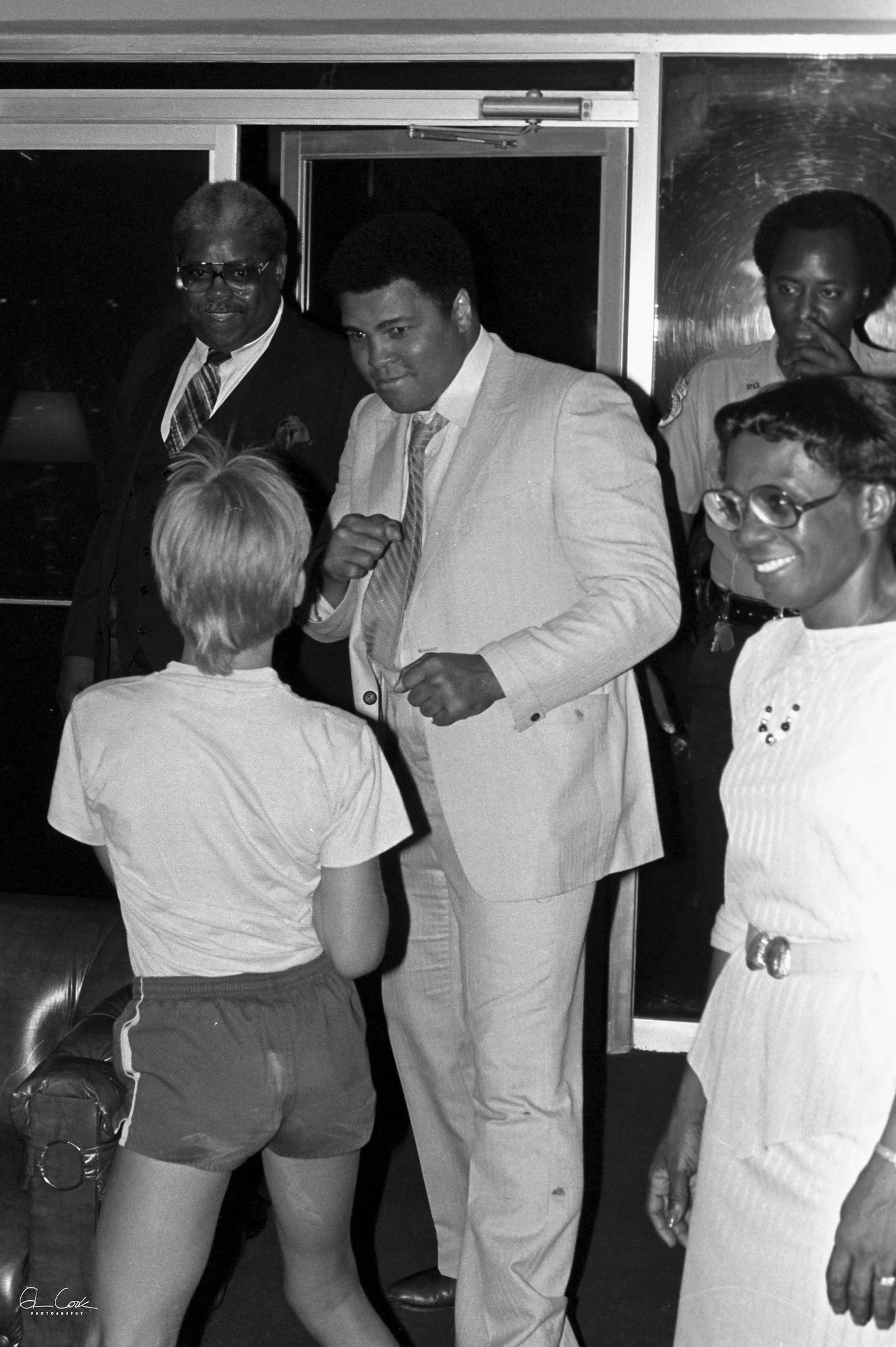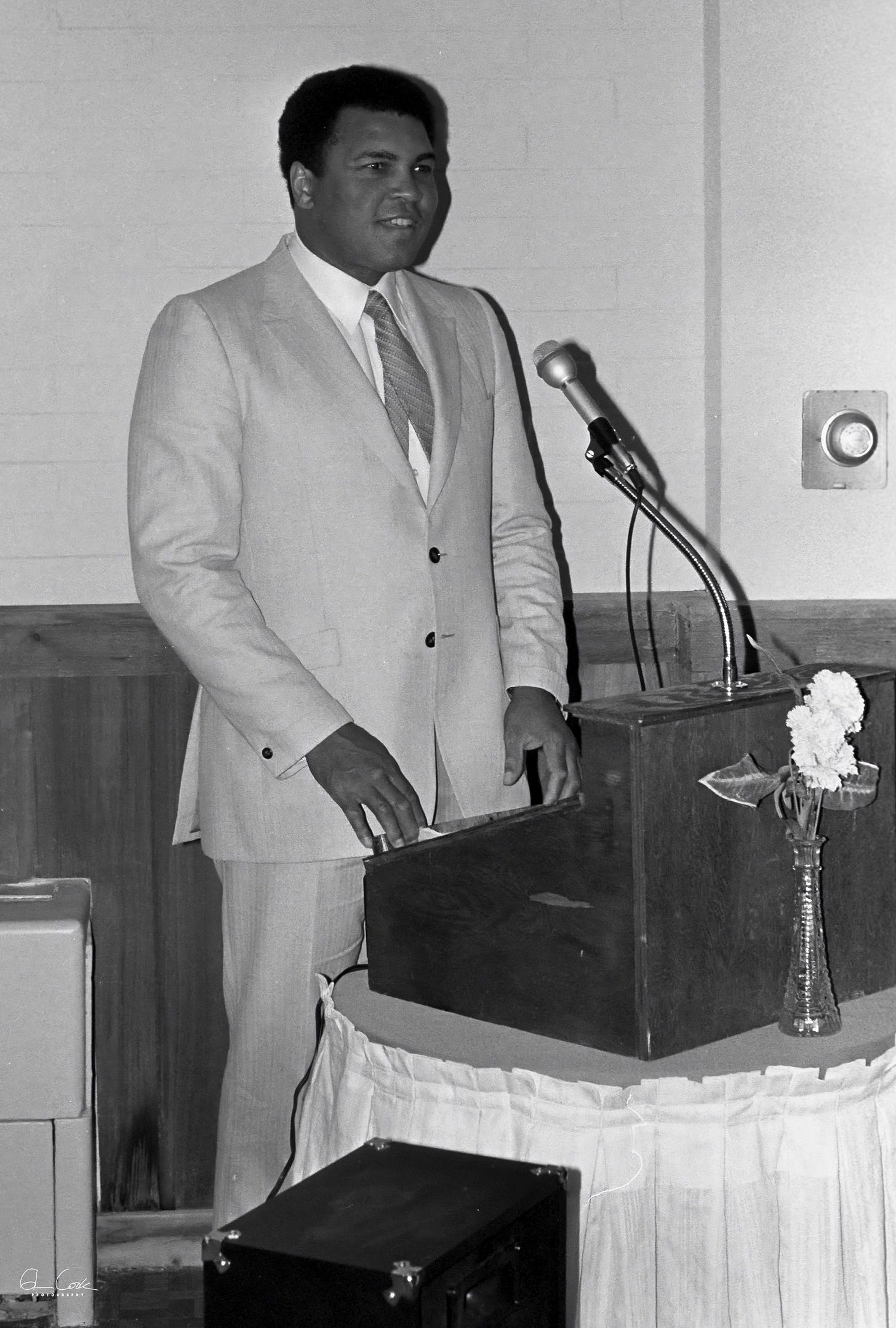
Forty years ago this month, I took my first professional photo of a famous person, only to see it not run in the newspaper.
In June 1985, I was assigned to take photos and write a story about an appearance by Muhammad Ali at the Holiday Inn at the base of the Texas City Dike. Ali, who had retired four years earlier, was the guest of honor at Galveston’s Juneteenth celebration and squeezed in an appearance at the local NAACP banquet.
This was a big deal for me at the time. Ali, who died nine years ago Tuesday, was a legend in my sports-loving family. We watched every match of his that was televised.
Ali, who had been diagnosed the previous year with Parkinson’s, was starting to show signs of the disease that would rob him of his rapid-fire speech. But he shook hands, visited and listened to everyone who was there, all in awe of his aura and presence. He also kissed a few babies, including the one in the photo above, spoke briefly, and signed copies of “Prayer and Al-Islam.”
Running around taking pictures, not really knowing what I was doing with the camera and not wanting to embarrass myself, I didn’t think to get the infant’s name. I did say hello to Ali, who wasn’t taking questions, and shook the right hand that had felled generations of boxers before leaving to write a story and develop the film.
I was shocked by the result. Somehow in the midst of everything, I managed to get what I still think is a great shot.
I knew the officer’s name — Willie Mitchell — and figured that I wouldn’t need the baby’s, but I was wrong. My editor refused to run it, choosing instead what I still consider to be an inferior photo in an effort to teach me a lesson.
Like most lessons I got in that first job, and there were a lot, it has stuck with me to this day.
Several days later, I took a copy of the picture to Mitchell and told him I was sad that it hadn’t run. “I wish you’d called me,” he said. “I could have told you who it was. It’s Thomas Carter’s grandson.”
I felt stupid. Carter was one of the city’s first two Black commissioners and an English teacher at College of the Mainland. A tremendously kind and thoughtful man, the two of us had several long talks about East Texas, where he grew up, and about writing. I still remember the quote he gave me for a Father’s Day story written only a few days after I graduated from high school.
The story was a puff piece, asking community leaders about the best piece of advice they had gotten from their fathers. I spoke to Carter in his office, and he paused for a moment before giving me this gem:
“If you teach your children anything, teach them to dream, because for anything to be accomplished, it must first be imagined.”
Chastened that I had not realized the baby in the photo was of Carter’s grandson, Alexander, I took him a print when I went to a commissioners’ meeting later that year. At some point, I went by his office at COM and saw it framed on his desk.
In the end, I guess the photo went where it was supposed to go.
Here are a few additional photos I got at the event:








Great story, Glenn. I love that the photo ended up on Carter's desk, which is probably more meaningful in the long run. It's neat to have an important youthful lesson associated with someone like Ali.
I think the photo that ran had resonance: who else but Ali could spar a white kid, knowing he could give the kid a whupping, in this rural Texas city.